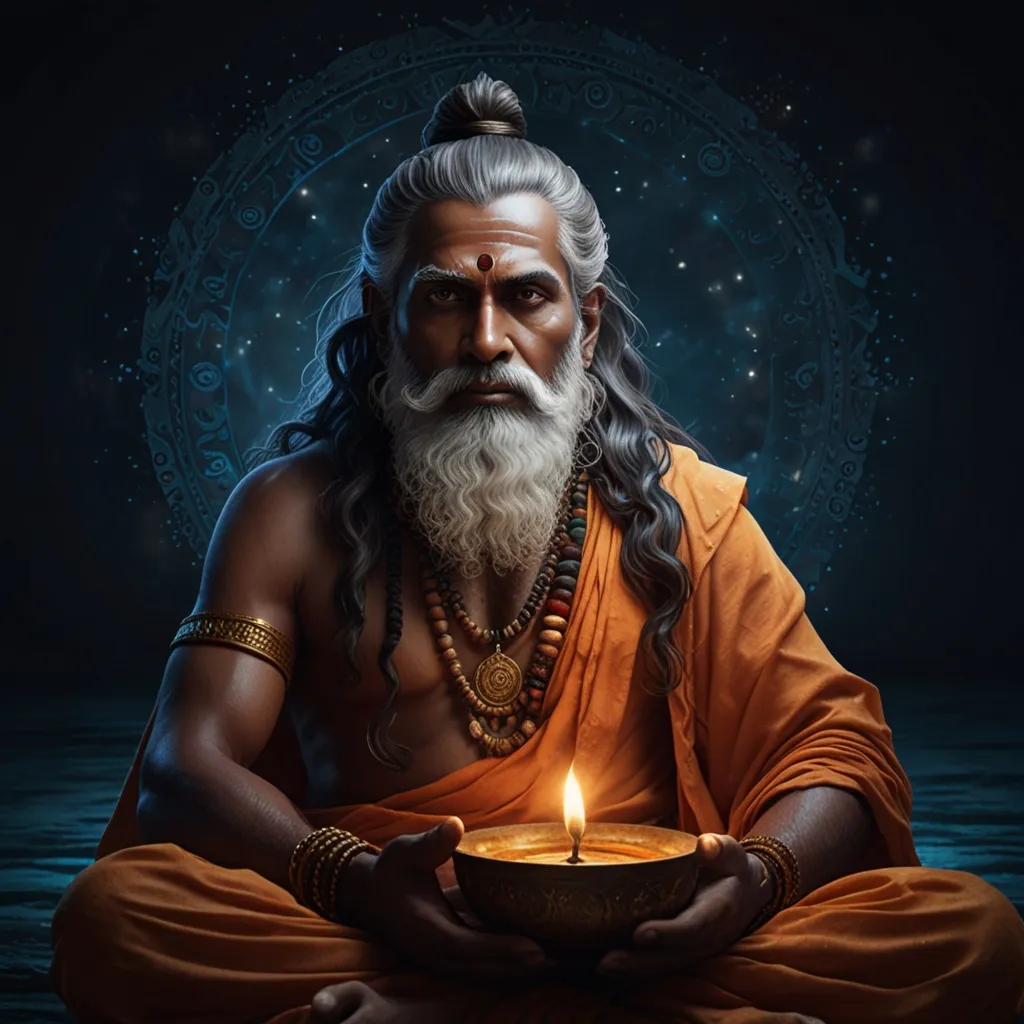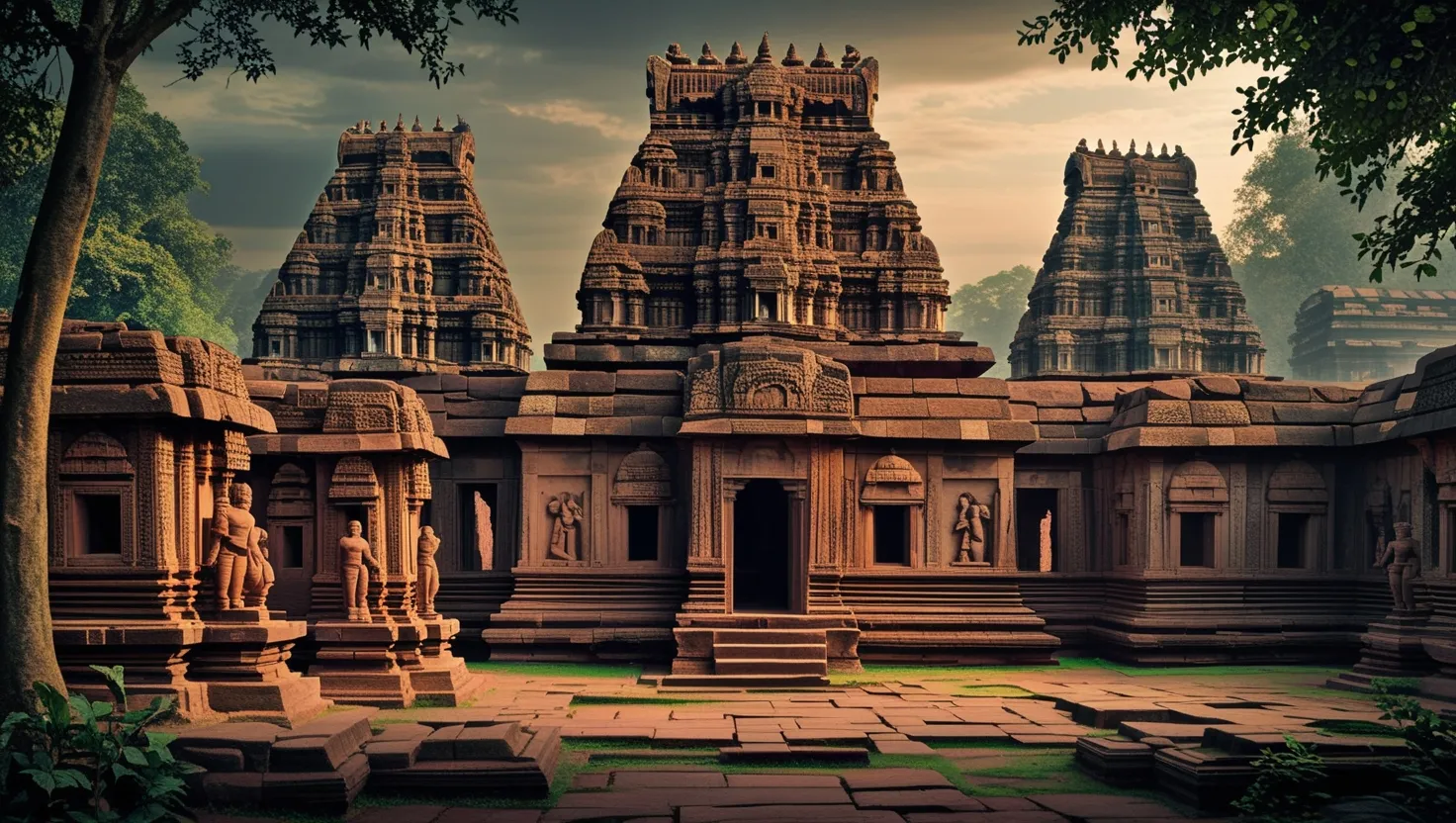Hindu mythology is like a giant, colorful tapestry woven with countless incredible stories. These tales help us make sense of the divine and the human in this vast world. One key figure in this realm is Rishi Vyasa, a sage whose works are simply unmatched in terms of their contribution to Hindu literature. Vyasa’s journey is a story bursting with compassion, wisdom, and a never-ending quest for knowledge.
Vyasa, often called the great sage and poet, embarked on a journey that would change the world forever. His story begins with a mind-blowing realization. He could see the past, present, and future of humanity, and what he saw was both amazing and pretty troubling. He imagined a future where people would be dull-minded and lacking faith in moral values. This vision of a bleak future stirred a deep sense of compassion in him for the generations to come.
Wanting to make a difference, Vyasa got to work. First, he organized the Vedas, breaking them into four parts to make them more digestible and easier to understand. This move allowed different sages to specialize in each Veda, ensuring that this sacred knowledge could be preserved and handed down through the ages. However, he quickly realized that this was only half the job. Women and people from non-Brahmin castes weren’t allowed to recite the Vedas, cutting them off from this fountain of wisdom.
To fix this, Vyasa composed the Mahabharata, an epic brimming with lessons on righteousness and moral values. He believed this story, woven around the lives of diverse characters, would uplift and enlighten everyone. Yet, even after completing this enormous task, something bothered him. He felt unfulfilled, unable to figure out what was missing.
Enter the sage Narada. Known for his spiritual skills, Narada could see straight into people’s minds. Vyasa, seeking answers, poured out his frustrations to Narada, asking for guidance. Narada’s response was a game-changer. He pointed out that while Vyasa had done a monumental job of organizing the Vedas and writing the Mahabharata, he hadn’t sung enough praises to the Lord in these works.
Narada explained that although the Mahabharata was a fabulous epic, it was packed with wickedness and immoral acts. He worried that readers might get the wrong idea and think such actions were justified, missing the deeper lessons. Narada stressed the need for a text that would sing the glories and actions of Sri Hari, the Lord of Vaikunta. This would help people grasp the unity and oneness of the God-principle instead of getting lost in the world’s diversity.
Inspired by Narada’s wisdom, Vyasa created the Bhagavata Purana. This text is a goldmine of stories that convey deep philosophy through simple, engaging narratives. It’s a testament to Vyasa’s dedication to humanity across all ages. The Bhagavata Purana isn’t just religious literature; it’s like a life manual, packed with stories that highlight the significance of compassion, humility, and the relentless pursuit of knowledge.
The story of Vyasa and the Bhagavata Purana teaches us some vital lessons. First, it reminds us to keep striving for new heights, no matter our accomplishments. There’s always room for greater good. Second, it underscores the need for humility and the importance of seeking advice, even when we think we’ve got it all figured out. Vyasa seeking Narada’s counsel is a lesson for everyone.
Switching gears, let’s dip into another riveting story from Hindu mythology involving one of the most revered deities, Shiva. Often portrayed as the destroyer, Shiva is a fascinating figure with stories that are as varied as they are powerful. One such story is the churning of the ocean of milk, known as the Samudra Manthan.
This epic tale begins with the gods and demons coming together to churn the ocean of milk, aiming to produce the nectar of immortality, Amrita. Shiva’s role in this story is absolutely crucial. As the churning got underway, a deadly poison emerged from the ocean, threatening to destroy the entire universe. But Shiva, being the compassionate figure he is, decided to consume the poison to save the world. This act of selflessness is classic Shiva—a figure who rises above the whole good-and-evil thing, acting solely for the greater good. The churning of the ocean of milk is a metaphor for the eternal battle between good and evil, with Shiva representing the ultimate balance and harmony.
Funny enough, Shiva’s story and Vyasa’s tale have many intersecting points. Both are praised for their wisdom and monumental contributions to Hindu mythology. Vyasa gave us the Mahabharata and the Bhagavata Purana, while Shiva is often seen as the destroyer bringing about renewal and transformation. Their stories, though different, share key elements of compassion and the pursuit of knowledge.
Hindu mythology is filled with more stories about the legacy of Vyasa. It’s said there are 28 Vyasa Maharshis, each contributing to the rich canvas of Hindu literature. These sages have written so many texts, including the Mahapuranas and the Brahma Sutras. Collectively, their work has shaped Hinduism’s religious and philosophical landscape profoundly.
The legacy of Vyasa and Shiva still inspires and guides people today. Their stories aren’t just old tales; they’re living lessons offering deep insights into human nature. They teach us the value of compassion, humility, and the unending quest for knowledge. In a world filled with so much diversity and complexity, their stories bring a sense of unity and purpose.
So, to wrap it up, the tales of Vyasa and Shiva are timeless gems that have greatly influenced Hindu mythology. They are stories loaded with compassion, wisdom, and the eternal search for knowledge. These narratives teach us the importance of humility, continuous effort, and striving for the greater good. As we navigate today’s world full of complexities, these ancient tales offer valuable lessons that remain just as relevant now as they were way back then.






